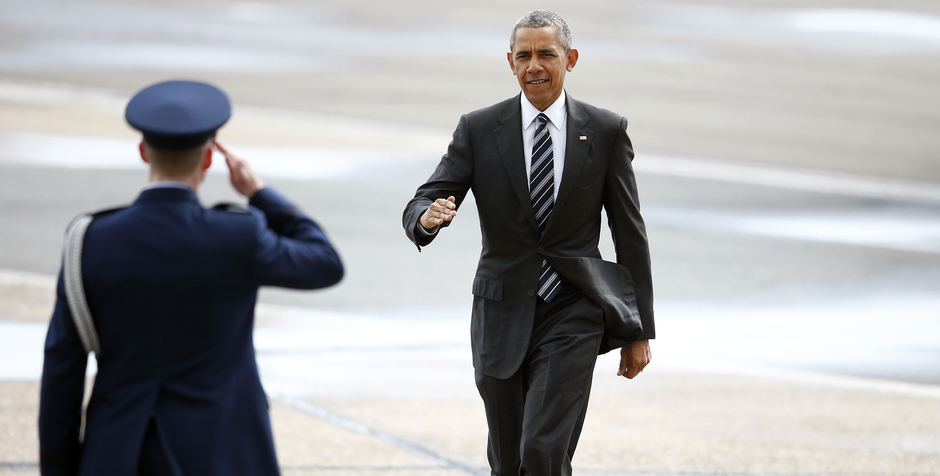The Long War Part 3: What’s the Commander’s Intent?
(Part 3 of 3)
Our fight against ISIS and Radical Jihadists will require a new approach, one that indicates the United States is prepared to take the terror threat seriously and is willing to unleash its power to win a war that we did not start. A large share of the blame for the nation’s current lack of progress in this war must be laid at the feet of President Obama and his inexperienced advisors. They have let the nation down in our fight against Radical Jihadists.
America’s fight against terrorists is hampered because President Obama does not understand the basics of what past Presidents and every Army Officer knows: The Military Decision Making Process, or MDMP. MDMP helps commanders visualize, articulate and direct combat actions against an enemy. While MDMP is used by operational commanders on the ground in tactical situations, the principles of this process are normally used up and down the chain of command, all the way up to the President, as Commander-in-Chief. The Military Decision Making Process guides strategic decision-making at the national level in one form or another.
It begins with the Commander-in-Chief telling his military advisors the desired “end state” as it applies to war or armed conflict. In other words, when all is said and done “this is what I want the end result to be.” President Obama’s lack of clarity is astonishing. His initial goal was to “diminish” and then later destroy ISIS (the Islamic State). Last week he stated that he wanted to “squeeze” ISIS so as to interfere with their operations. Of course, the remarkable thing about his wavering strategic goals is that, in every war our nation has ever fought, the stated strategic goal was to utterly defeat the enemy and to agree on terms of surrender or, at least, an armistice. Wars are not simply managed. They are won.
In the MDMP, the President’s strategic directive should be simple, direct, and easily understood. The complicated details and minutiae involved is the work of the military commanders and their coordination with the Secretary of Defense.
It is not the responsibility of the Commander-in-Chief to figure out how to achieve the strategic goal; his military staff (once the President states the desired end state) will come back to him with several different options to reach the strategic objective he gave them.
For 26 years as an Army staff officer, I was involved in military decision-making and the orders process at a tactical level. One of the most important paragraphs in each Operations Order was entitled simply: Commander’s Intent. This told us one of the most important things related to our mission: this is what the commander wants to happen. All staff officers knew, by that paragraph, what they had to do.
Currently there is much confusion and inaction in the prosecution of the war against ISIS. A good portion of this confusion is related to the fact that until recently President Obama had not authorized his operational commanders in Afghanistan and Iraq to use their own judgment as to when and whom to attack. A few weeks ago the White House announced that the Commander-in-Chief was now allowing the commanders on the ground to make operational decisions. This is a shocking revelation. It means that until very recently tactical decisions had to be cleared with the White House, staffed by inexperienced staffers with no military service and little capability to decide how either to fight or win on the battlefield. Even now, as I mentioned in a previous post, the U.S. Commander of AFRICOM is still not allowed to engage ISIS in Libya without White House approval.
President Obama seems to be looking for certainty in war. Since there is no ultimate certainty, he hesitates or fails to act on the advice of his military advisors, thus tying the hands of those who are charged with fighting the war. What our generals and admirals require is clear presidential direction and strategic goals.
Is our military tasked with the responsibility to actually defeat ISIS? If so, the Commander-in-Chief needs to state this clearly. It is how wars are won. We have the strongest and most lethal military in the world. We need a Commander-in-Chief who will utilize this force.
Under our Constitution the United States Congress is the branch of the government with the authority to declare war. The President, as the Commander-in-Chief, executes that war through the United States Military and other government agencies. However, in every declared war in our nation’s history Congress declared war at the request of the President
We are in a fight for our very way of life. Contrary to the President’s Statement on June 14th, ISIS is an existential threat to the United States. They have declared that they are at war with us. We need a new Authorization for the Use of Military Force (AUMF) that names our jihadist enemies and ISIS in particular. This new AUMF – in addition to the current AUMF in the War on Terror – would authorize the President to use all means at his disposal for as long as it takes to destroy ISIS. It would send a message to the world and to ISIS that we are serious and that we will not rest until ISIS is utterly and completely destroyed.
